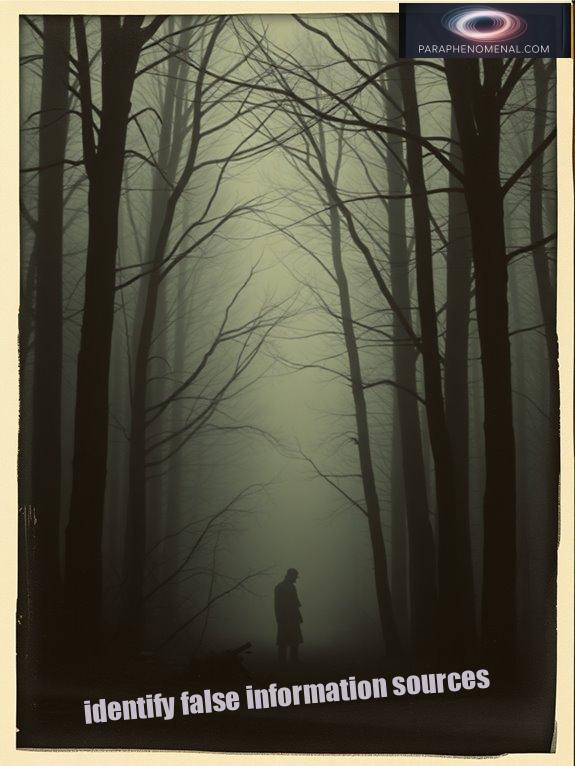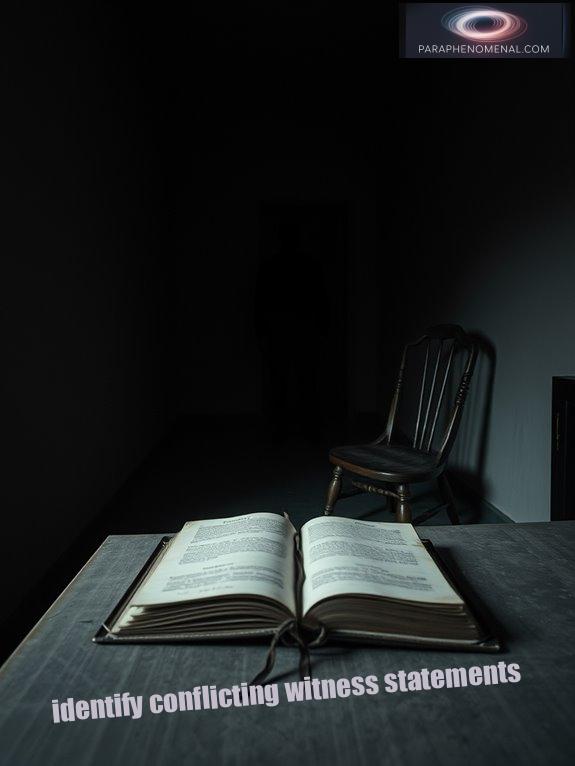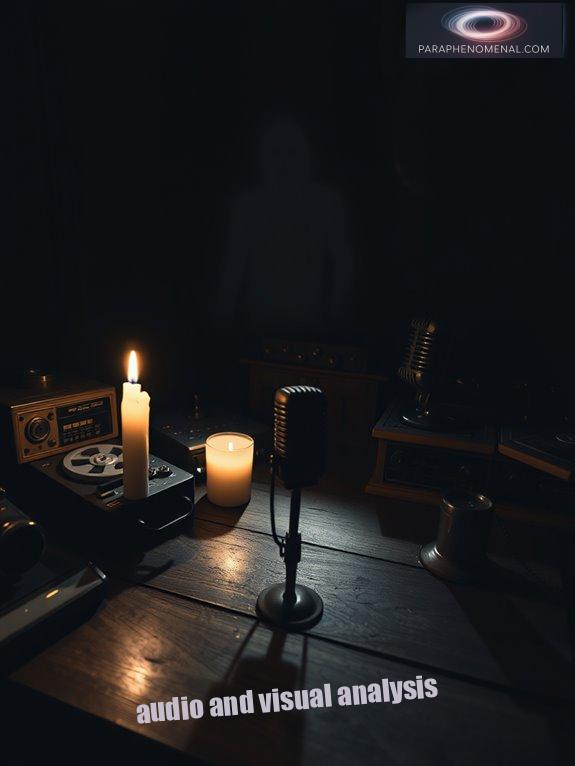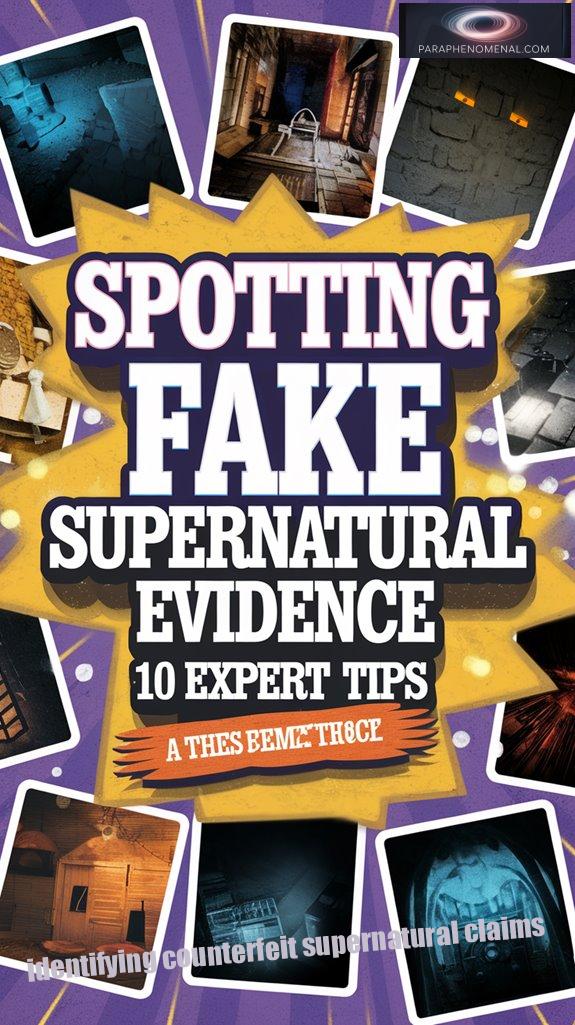When diving into the realm of paranormal investigations, I always remind myself: not everything is as it seems.
Have you ever questioned the readings on that fancy ghost-hunting device?
Faulty equipment can lead us astray.
I also dig into the stories behind the evidence. Local legends and past events often shape these narratives.
And let's not forget about potential hoaxes; financial gain can motivate some to fabricate.
By critically analyzing recordings, I can often spot manipulation.
Curiosity and caution are my guiding lights in this eerie exploration.
What will you discover?
A Haunting Encounter: My Paranormal Investigation Story
A few years back, I joined a local paranormal investigation team. One night, we explored an abandoned asylum filled with chilling stories of former patients. As I reviewed our recordings later, I heard whispers that sent shivers down my spine.
But skepticism kicked in.
I compared our findings with local legends and even reached out to previous investigators.
Turns out, the whispers were a common auditory illusion, often reported in that location.
This experience taught me the importance of thorough research and the fine line between reality and myth.
In the world of the supernatural, it's easy to get lost in fear, but staying grounded helps separate fact from fiction.
Quick Takeaways
- Analyze the context of evidence, considering historical significance and local legends that may influence perceptions of paranormal activity.
- Be skeptical of equipment readings, as environmental factors and technical limitations can lead to false interpretations of supernatural phenomena.
- Look for inconsistencies in stories and lack of physical evidence, which are often red flags for potential hoaxes.
- Utilize professional analysis tools to verify audio and visual recordings, ensuring authenticity and clarity before drawing conclusions.
- Recognize cognitive biases and emotional influences that may distort interpretations of experiences related to supernatural claims.
Understanding Common Equipment Used

When it comes to investigating the supernatural, having the right equipment is crucial. I rely heavily on voice recorders to capture Electronic Voice Phenomena, which can reveal unexplained voices. EMF meters help me detect fluctuations in electromagnetic fields, but regular equipment calibration is essential for accurate readings. An EMF gauge is particularly useful for identifying potential ghostly apparitions, as increased readings may suggest paranormal activity. Additionally, understanding how different tools function helps investigators maximize their effectiveness. Thermal cameras are invaluable for spotting thermal anomalies, revealing cold spots that might indicate paranormal activity. Motion detectors alert me to disturbances, while night vision cameras capture evidence in low-light situations. At ParaPhenomenal, we emphasize understanding this equipment to discern genuine supernatural phenomena from common misinterpretations and guarantee our investigations remain credible.
Skepticism Towards Equipment Readings
While many people trust the readings from their paranormal investigation equipment, it's essential to remain skeptical.
These tools have significant equipment limitations that can lead to false readings. For instance, EMF meters might spike due to faulty wiring or nearby electronics, not ghosts. Additionally, capturing the unseen can often misinterpret common environmental factors as signs of paranormal activity.
Similarly, abrupt temperature changes could be caused by drafts, not supernatural entities.
We created this website, ParaPhenomenal, to help you understand these nuances.
Keep in mind, even spirit boxes can pick up random radio signals, misleading you.
To truly explore the unknown, approach equipment readings with a critical eye, ensuring you consider natural explanations before jumping to conclusions. Additionally, it's important to remember that common ghost hunting tools often yield misleading results due to environmental factors.
Recognize Potential Hoaxes

Recognizing potential hoaxes in the domain of the supernatural is essential if you want to navigate this often misleading territory effectively.
Many hoaxes arise from specific hoax motivations, such as financial gain or a desire for attention. These fabrications often align with cultural narratives, capturing our imaginations and spreading quickly, especially on social media. The history of the Surgeons Photo illustrates how easily public perception can be swayed by seemingly credible evidence. To effectively combat these deceptions, employing critical thinking skills can help you analyze evidence and separate fact from fiction.
Look for red flags like a lack of physical evidence or inconsistencies in stories. Historical examples, like the Loch Ness Monster's "Surgeon's Photo," remind us that critical thinking is vital.
At ParaPhenomenal, we aim to empower you to discern what's real and what's simply a clever deception.
Consider Human Psychology
Understanding human psychology is essential for anyone trying to decipher the truth behind supernatural claims.
Cognitive biases, like confirmation bias, can skew our understanding, as believers often seek evidence that supports their views while ignoring contradictions.
Emotional influence plays a significant role too; strong feelings can distort our interpretations of experiences.
Emotions can profoundly shape our perceptions, often leading us to misinterpret our own experiences.
Social groups often reinforce these beliefs, making it harder to approach claims critically.
At ParaPhenomenal, we recognize that understanding these psychological factors is vital in spotting fake evidence. Additionally, the concept of cognitive dissonance can further complicate how individuals reconcile conflicting information about their beliefs.
Evaluate the Context of Evidence

To properly evaluate the framework of supernatural evidence, it's essential to take into account the historical and cultural setting surrounding the claims. Understanding this setting can reveal much about the evidence we encounter.
- Location Significance: Consider the historical significance of where the evidence is found.
- Folklore Influence: Local legends can shape how people perceive paranormal events.
- Past Events Impact: Tragic or significant past occurrences can foster belief in supernatural entities.
Additionally, exploring the haunting legends associated with historic ghost towns can provide deeper insights into the origins of certain claims.
Check for Misinterpretation of Data
While examining supernatural claims, it's essential to reflect on how easily data can be misinterpreted. Cognitive biases often cloud our judgment, leading us to see what we want instead of the truth.
Many supposed paranormal events arise from natural phenomena we misunderstand, or even psychological states like stress that skew our perceptions. In fact, certain natural explanations can account for many ghostly sightings reported throughout history.
Technology can also betray us; audio or visual equipment might create false evidence.
At ParaPhenomenal, we encourage a critical approach—question what you see.
Always bear in mind to explore alternative explanations, as misinterpretation of data can lead to sensational claims that aren't grounded in reality.
Look for Inconsistencies in Testimonies

Inconsistencies in testimonies can often reveal the truth lurking beneath supernatural claims.
When I analyze accounts, I look for specific signs that raise red flags regarding witness reliability:
- Biases in Interviews: Leading questions can skew a witness's viewpoint.
- Changes in Stories: Over time, recollections may evolve or contradict earlier statements.
- Lack of Corroborative Evidence: Reports without supporting evidence weaken their credibility.
Respect Scientific Methodology
Respecting scientific methodology is essential when examining supernatural claims, as it provides a structured approach to understanding the world around us.
By using empirical validation, we can assess the credibility of evidence and differentiate between science and the supernatural. Scientific methodology emphasizes testability, repeatability, and falsifiability, which are vital in evaluating claims.
When we adopt a skeptical mindset, we encourage critical thinking and promote evidence-based reasoning. This process leads us to question unverified assumptions and recognize methodological flaws in supernatural claims. Additionally, understanding paranormal activities can help clarify the boundaries between natural phenomena and unexplained occurrences.
At ParaPhenomenal, we believe that embracing scientific methodology empowers us to seek truth amidst the mystery.
Analyzing Audio and Visual Recordings

Analyzing audio and visual recordings is a key step in evaluating supernatural claims, as these forms of evidence can be both compelling and deceptive.
To guarantee you're interpreting them correctly, consider these points:
- Assess audio clarity; background noise can distort sounds, leading to misinterpretation.
- Look for visual anomalies—abrupt starts or ends may indicate manipulation.
- Use professional analysis tools to verify recordings; this is crucial for authenticity.
- Familiarize yourself with paranormal audio analysis techniques to better distinguish genuine evidence from hoaxes.
Importance of Ethical Documentation
While many people are captivated by tales of the supernatural, it's essential to approach documentation with a strong ethical framework.
Ethical transparency and informed consent are vital in our investigations. When gathering evidence, I always make certain participants understand the process and risks involved. This honesty fosters trust and maintains our integrity.
We must avoid sensationalism, as exaggerating findings can distort public perception and damage our credibility. By adhering to these principles, we not only protect ourselves but also contribute to a respectful and informed discourse around paranormal phenomena. Additionally, understanding legal guidelines for investigations helps ensure that our methods comply with relevant laws and protect the rights of all involved.
At ParaPhenomenal, we prioritize these ethics to guarantee responsible exploration of the unknown.
Savannah's Eerie Historic District
Savannah's Historic District stands as a fascinating blend of rich history and eerie tales. Known for its haunted landmarks, this area invites thrill-seekers to explore ghostly encounters.
Here are three must-visit sites:
- Colonial Park Cemetery: Established in 1750, it's famous for ghost sightings.
- Sorrel Weed House: With its tumultuous past, it's a hub for paranormal activity.
- Mercer-Williams House: This iconic site is rich in ghost stories and history.
As I wander these cobblestone streets, I can't help but feel the weight of its past, making our ParaPhenomenal mission resonate even deeper. The Historic District is part of a larger narrative of America's haunted landmarks, showcasing the country's fascination with the supernatural.
References
- https://www.spiritshack.co.uk/blog/ghost-hunting-teams/is-ghost-adventures-fake/
- https://qualaroo.com/blog/how-to-use-qualitative-data-to-improve-your-blog/
- https://sc.edu/uofsc/posts/2023/10/conversation-are-ghosts-real.php
- https://wilson.fas.harvard.edu/files/jeffreywilson/files/jeffrey_r._wilson_academic_writing.pdf
- https://www.americanghostwalks.com/ghost-hunting-10-essential-tips-for-first-time-paranormal-investigators
- https://roadtrippers.com/magazine/ghost-hunting-gear-guide/
- https://masterblogging.com/blog-post-research/
- https://www.spiritshack.co.uk/blog/ghost-hunting/paranormal-evidence/
- https://buffer.com/resources/perfect-blog-post-research-data/
- https://anightamongghosts.com/articles/ghost-hunting-equipment-101-what-you-need-and-what-its-used-for/
